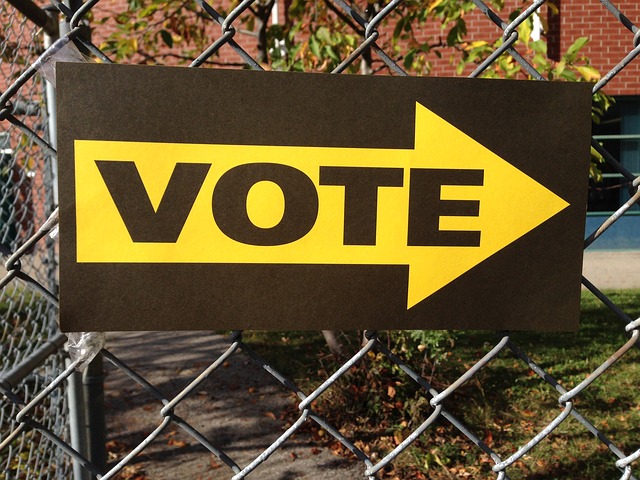
By Matt DeSantis, Staff Writer
The unprecedented nature of this election cycle and its final result have inspired closer inspection of the voting process and the laws that govern it. While the U.S. Constitution relegates certain election laws to the states, the states must still comply with all other Constitutional provisions — especially the 15th and 19th Amendments, which forbid discrimination based on race or sex, respectively, and the 24th Amendment, which eliminated the poll tax.[1]
Poll taxes were established in post-slavery America, primarily in southern states, along with several northern and western states, notably California.[2] These taxes required that a sum of money be paid in order to register to vote and were sometimes accompanied by a literacy test.[3] Both poll taxes and literacy tests held the same purpose: to disenfranchise freed slaves in the wake of the ratification of the 15th Amendment in 1870. These laws disproportionately affected former slaves due to their widespread poverty and lack of education. These conditions existed because of other laws that had denied black Americans and former slaves educational and economic opportunities.[4]
To further narrow the field of disenfranchisement, these barriers sometimes included “grandfather clauses” that exempted people from the literacy tests and poll taxes if their grandfathers had legally voted.[5] This provision could only apply to white voters because, legally, people of other races had been unable to vote a scant few years before. The cycle would continue for years, as people could not take advantage of the grandfather clauses because their grandfathers could not afford to vote.
These practices continued until as recently as 1970, with the 24th Amendment’s ratification in 1966 providing that the right to vote could not be denied by “reason of failure to pay any poll tax or other tax.”[6] Originally, this only applied to federal elections but was extended to state elections by the Supreme Court in Breedlove v. Suttles.[7] The court did not cite the 24th Amendment in its reasoning, opting to instead invoke the Equal Protection Clause of the 14th Amendment.[8]
The grandfather clauses were earlier held to be unconstitutional in Guinn v. United States, and the literacy tests were eliminated in 1965 by the Voting Rights Act which was supported by Oregon v. Mitchell.[9] [10] [11] Following the 1970 decision, there have been no restrictions on voting permissible under federal law other than the standard registration requirement.
One of the most prominent concerns regarding this presidential election and the previous one is the issue of voter fraud. Although the earliest of such laws came into existence in 1950, the possibility of double voting or votes being cast by dead citizens has recently inspired various states to pass voter identification laws. Despite the actual occurrence of voting fraud falling within the margin of error of the voting machines themselves, some states now require the presentation of a photo ID in order to cast a vote.[12]
There are four general levels of voter ID laws when they are implemented: strict photo ID, strict non-photo ID, non-strict photo ID, and non-strict non-photo ID.[13] Where the laws are strict, the specified ID must be provided in order to cast a vote, but if one is not provided, a provisional ballot is cast and will only be counted as a legitimate vote if ID is provided at a later time.[14] In non-strict states, a provisional ballot will be cast upon production failure; the only further action that must be taken, however, is usually signing an affidavit as to the truth of your identity.[15] Only 10 states in the Union have implemented strict voter ID laws.[16]
These laws have come under fire for their disparate effects on poor and minority communities. Acceptable photographic ID must be government-issued in order to be valid. These include, on the state level, driver’s licenses and state-issued ID cards, and, on the federal level, passports. The cost of obtaining identification can range from $20 to $135, depending on the form of ID, and can only be obtained through a trip to a post office or Department of Motor Vehicles Office. Although these may seem paltry sums and petty requirements, there is a significant portion of the American population who are eligible to vote but unable to meet these obligations.[17]
When living from paycheck to paycheck and deciding which bills to pay, $20 can mean food for a family. When working two jobs in order to make ends meet, taking a day off of work in order to meet the issuing offices’ unaccommodating hours could be disastrous. Poor Americans may be less likely to have passports or driver’s licenses because they lack the opportunities to travel internationally or have access to a car.[18] [19] The laws’ requirements may seem like nothing to some but everything to others.
Voter ID laws are the unnecessary solution to a nonexistent problem, and a thinly veiled attempt to institute a poll tax. Requiring the purchase of an item before voting, especially one that poorer people are less likely to have, is in the same spirit as collecting money at the polls. The 24th Amendment explicitly prohibits any poll tax without allowing fees of any kind. Any law that disenfranchises an entire demographic by requiring their payment before counting their vote is unconstitutional on its face.
Sources
[1] U.S. Const. amend. 10, 15, 19, 24
[2] http://www.crmvet.org/info/lithome.htm
[3] Id.
[4] Williams, Heather Andrea, Self-Taught African American Education in Slavery and Freedom 2005
[5] https://www.britannica.com/topic/grandfather-clause
[6] U.S. Const. amend. 24
[7] Breedlove v. Suttles, 302 U.S. 277 (1937)
[8] Id.
[9][9] Guinn v. United States, 238 U.S. 347 (1915)
[10] 52 U.S.C.A. § 10301
[11] Oregon v. Mitchell, 400 U.S. 112 (1970)
[12] Levitt, Justin, The Truth About Voter Fraud, 7 (2007)
[13] http://www.ncsl.org/research/elections-and-campaigns/voter-id.aspx
[14] Id.
[15] Id.
[16] Id.
[17] Proctor, B.D., J.L. Semega, & M.A. Kollar. Income and Poverty in the United States: 2015, U.S. Census Bureau (2016)
[18] http://tinet.ita.doc.gov/outreachpages/download_data_table/2015_Outbound_Analysis.pdf
[19] Semuels, Alana, No Driver’s License, No Job, The Atlantic June 15, 2015